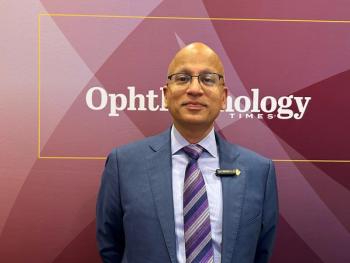
Specialists weigh in on meibomian gland dysfunction report
Most eye-care practitioners are unlikely to read any journal cover to cover, and perhaps they may consider meibomian gland dysfunction underwhelming as a topic at a time when there are a number of exciting developments in vision research.
Most eye-care practitioners are unlikely to read any journal cover to cover, and perhaps they may consider meibomian gland dysfunction (MGD) underwhelming as a topic at a time when there are a number of exciting developments in vision research.
However, specialists in cornea and external disease agree that the recently published report from the International Workshop on Meibomian Gland Dysfunction ("MGD Workshop") should be essential reading for all clinicians.
Eric D. Donnenfeld, MD, described the report of the MGD Workshop report as a landmark publication that provides consensus statements and guidelines from a group of more than 50 experts on topics including MGD etiology, management, and treatment.
"MGD is an extremely important problem because of its prevalence and clinical consequences," said Peter J. McDonnell, MD, director and William Holland Wilmer Professor of Ophthalmology, Wilmer Eye Institute, Johns Hopkins University School of Medicine, Baltimore. "According to some reports, two-thirds of patients undergoing cataract surgery have some component of dry eye and/or eyelid disease. Yet, these diagnoses are underappreciated and often overlooked.
"I applaud the MGD Workshop participants for the effort they put forth in reviewing the literature and compiling this very comprehensive report reviewing the current state of knowledge about MGD," added Dr. McDonnell, who also is the chief medical editor of Ophthalmology Times (See editorial page "Review targets MGD"). "It is interesting material, and considering how widespread MGD is among our patients, I would like to think that eye-care practitioners would take the time to read through the issue and bring themselves up to date on this condition, its diagnosis, and treatment."
Terrence P. O'Brien, MD, was a member of the MGD Workshop management and treatment subcommittee. He noted the project benefited from the considerable efforts and expertise of the more than 50 participating clinical and basic science researchers dedicated to advancing the understanding and management of MGD. Creating the report that summarizes the current state of knowledge about MGD and that provides recommendations for practitioners and researchers was a monumental task, but he believes the group was successful in its endeavor to distill a voluminous amount of material into a highly readable and useful resource.
"Publication of this report is an exciting event for the MGD Workshop participants, and I share enormous enthusiasm with my colleagues about the value of its content and a belief that the diagnosis and treatment guidelines will be an important step forward in improving patient care," said Dr. O'Brien, professor and Charlotte Breyer Rodgers Distinguished Chair of Ophthalmology, Bascom Palmer Eye Institute, University of Miami Miller School of Medicine, Miami.
"I urge all clinicians to read the entire report and to focus particularly their attention on the sections that are most germane to patient care," Dr. O'Brien said.
Dr. O'Brien noted the report from his own subcommittee on management and therapy is one section that may hold the most immediate interest to clinicians. In trying to develop evidence-based treatment recommendations, the group first created an MGD classification system based on level of severity.
"The same type of methodology was used by the Delphi Panel of the Dysfunctional Tear Film Study Group and the International Dry Eye Workshop sponsored by the Tear Film & Ocular Surface Society in developing treatment recommendations for dry eye disease," Dr. O'Brien said. "Such a system is valuable in allowing clinicians to adopt an organized management approach toward MGD in a rational manner."
As key features, the treatment recommendations emphasize the need to address MGD with a multimodal approach, ongoing care, attention to co-existing or accompanying disorders of the ocular surface and/or eyelids, and escalation of the intervention if symptoms are not brought under satisfactory control.
Newsletter
Don’t miss out—get Ophthalmology Times updates on the latest clinical advancements and expert interviews, straight to your inbox.



















































.png)


